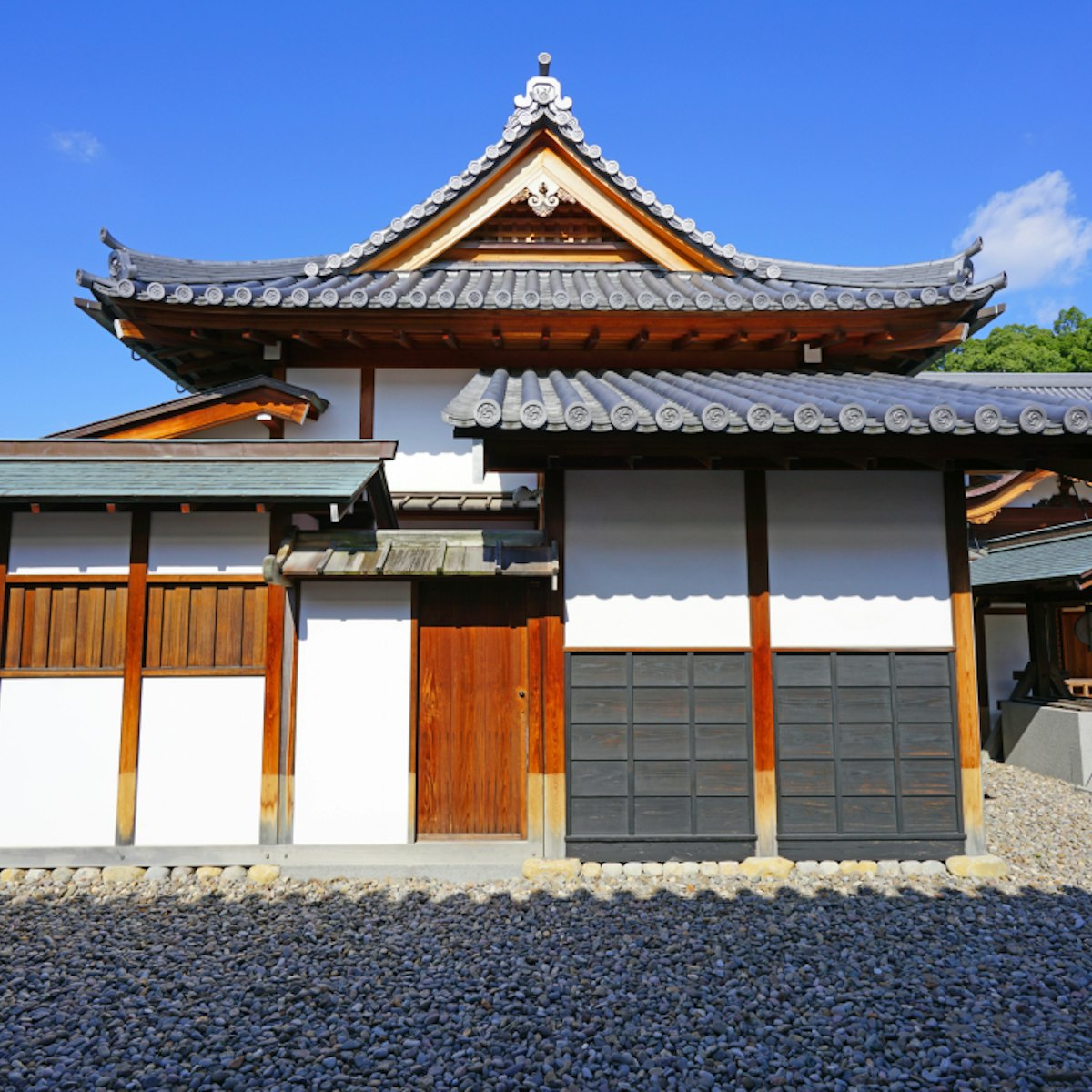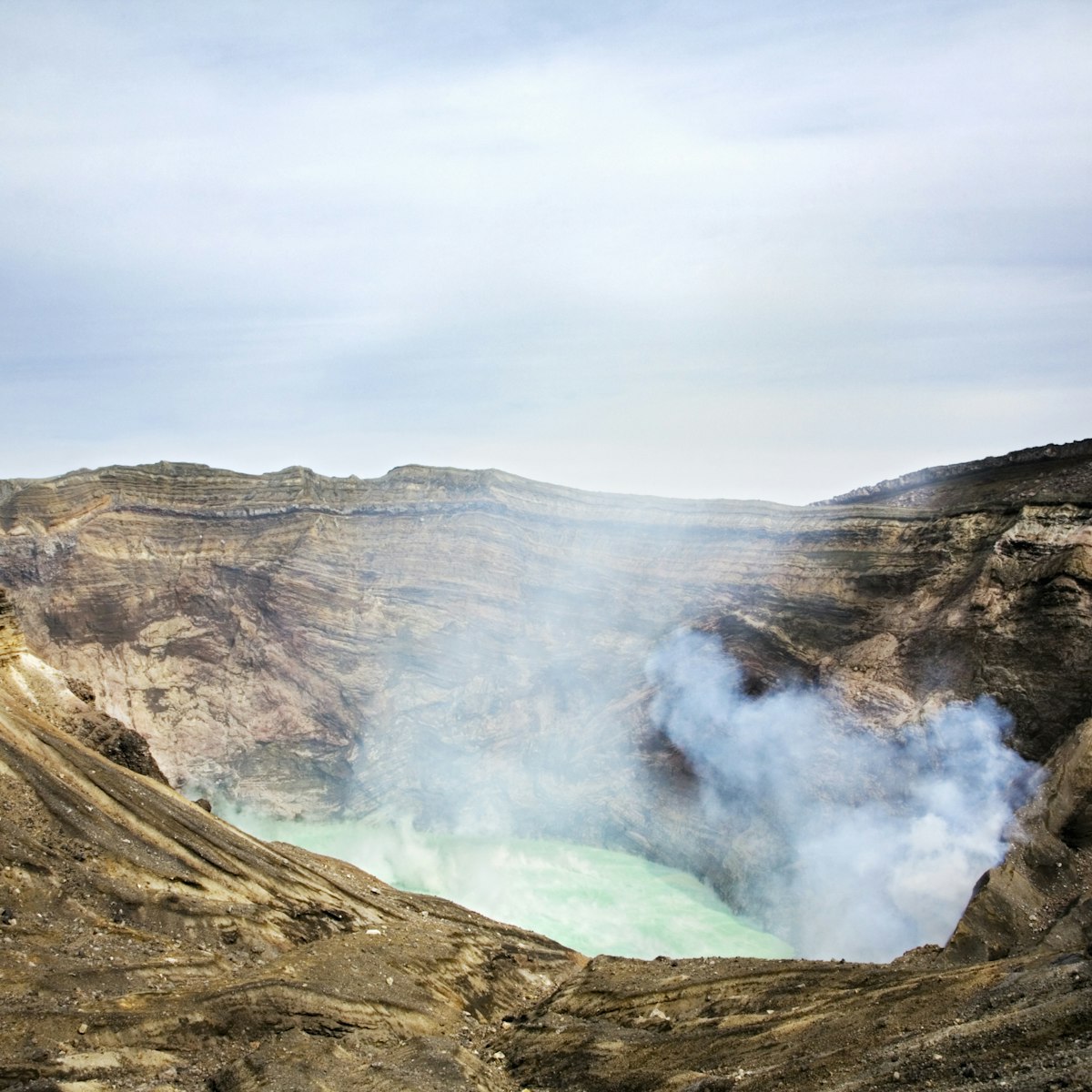
Nagasaki
A still, serene and deeply moving place, Nagasaki's Peace Park commemorates the atomic bombing of the city on August 9, 1945, which reduced the…

Nagasaki
A still, serene and deeply moving place, Nagasaki's Peace Park commemorates the atomic bombing of the city on August 9, 1945, which reduced the…

Kumamoto
Dominating the skyline, Kumamoto's robust castle is one of Japan's best, built in 1601–07 by daimyō Katō Kiyomasa, whose likeness is inescapable around…

Nagasaki
From afar, the Unesco World Heritage island of Hashima resembles a battleship, hence its nickname Gunkanjima ('battleship island'). Up close, this long…

Nagasaki
In 1641 the Tokugawa shogunate banished all foreigners from Japan, with one exception: Dejima, a fan-shaped, artificial island in Nagasaki harbour. From…

Kyūshū
This hilltop castle was ruled mostly by the Matsudaira clan from the 1660s and played a part in the Shimabara Rebellion. It was rebuilt in 1964. As well…

Kyūshū
One of Shintō's loveliest shrines honours the cave where the goddess Amaterasu hid. The cave itself is off-limits, but Nishi Hongū (the shrine's main…

Kyūshū
Among the countless visitors to the grand, sprawling Tenman-gū – shrine and burial place of poet-scholar Tenman Tenjin – are students making offerings and…

Nagasaki
Situated on a forested hilltop and reached via multiple staircases with nearly 200 steps, this enormous shrine was established in 1625. Around the grounds…

Nagasaki
On 9 August 1945, the world's second nuclear weapon detonated over Nagasaki, and this sombre place recounts the city's destruction and loss of life…

Nagasaki National Peace Memorial Hall for the Atomic Bomb Victims
Nagasaki
Adjacent to the Atomic Bomb Museum and completed in 2003, this minimalist memorial by Kuryū Akira is a profoundly moving place. It's best approached by…

Kyūshū
Takachiho's magnificent gorge, with its waterfall, overhanging rocks and sheer walls, was formed over 120,000 years ago by a double volcanic eruption…

Nagasaki Museum of History & Culture
Nagasaki
This large museum with attractive displays focuses on Nagasaki's proud history of international exchange. Additionally, there's a fabulous, detailed…

Kyūshū
Naka-dake (1506m) is Aso's active volcano – very active in recent years, with fatal eruptions in 1958 and 1979, and other significant eruptions in 1989,…

Kyūshū
Built into the tranquil eastern hills of Dazaifu and reached through more escalators than can be found at the average airport, this striking structure …

Kyūshū
This fascinating pottery factory has something for everyone: you can try making simple pottery on the throwing wheel (your pieces can be fired and mailed…

Kyūshū
There is perhaps no more eloquent monument to the futility of war than this harrowing museum about WWII kamikaze pilots. Around 2km west of town, Chiran’s…

Kyūshū
Nicknamed Maizuru-jō (Dancing Crane Castle), this elegantly proportioned white castle (built 1608, rebuilt 1966 and refurbished 2017) is picturesquely…

Kumamoto
Southeast of the city centre, this photogenic lakeside garden was built between 1636 and 1716 for the ruling Hosokawa clan. The main path represents the…

Kyūshū
Across from the waterfront, this building was the trading house of the Dutch East India Company. Shogunal authorities took the Gregorian date on the front…

Beppu Traditional Bamboo Crafts Centre
Beppu
You may be blown away by the versatility of bamboo, which grows copiously in the Beppu region. In the ground-floor gallery, intricate, refined pieces span…

Fukuoka
Spread over three machiya (traditional Japanese townhouses), this folk museum re-creates a Hakata nagare (neighbourhood unit) from the late Meiji era…

Kyūshū
Deep in a forest along a mossy riverbed are two Heian-period Buddha images carved into a cliff: a 6m figure of the Dainichi Buddha and an 8m figure of…

Kyūshū
These thousand-year-old stone Buddhas lie just outside Usuki. Four clusters comprising 60-plus images (59 are designated National Treasures) lie in a…

Nagasaki
This hilltop church, Japan's oldest (1864), is dedicated to the 26 Christians who were crucified in Nagasaki in 1597. The former seminary and bishop's…

Nagasaki
In Teramachi, this Ōbaku temple (Ōbaku is the third-largest Zen sect after Rinzai and Sōtō) was built in 1629 by Chinese monk Chaonian. Its red entrance…

Fukuoka
On the upper floors of the Hakata Riverain mall, this large museum houses the world-renowned Asia Gallery, and additional galleries for special…

Kyūshū
In the Teppō-machi area, northwest of the castle, are buke yashiki (samurai residences) set along a pretty, 450m-long gravel road with a stream down the…

Kyūshū
The area's renowned pottery kilns are concentrated in photogenic Ōkawachiyama, a 15-minute bus ride from the station. Around 30 workshops and public…

Kyūshū
About 15 minutes on foot from Arita Station, this large, hilltop operation is the most comprehensive ceramics museum in the region. The Shibata Collection…

Ji-in to Kyōkai no Mieru Michi
Kyūshū
This street, rising up a steep hill from town, is one of the most photogenic vantage points in all of Kyūshū. The Buddhist temples and large Christian…

Kyūshū
The Five Mountains of Aso are the smaller mountains within the Aso-san caldera's outer rim: Eboshi-dake (1337m); Kijima-dake (1321m); Naka-dake (1506m);…

Nagasaki
Some two dozen former homes of the city's Meiji-period European residents and other important buildings have been reassembled in this beautifully…

Beppu
Beppu's most-hyped attraction is the jigoku meguri ('hell circuit'; groups of boiling hot springs), where waters bubble forth from below the ground with…

Nagasaki
A must-see for anyone coming to Nagasaki for its historic significance, this park houses a smooth, black-stone column that marks the point above which the…

Kyūshū
Reached via a coastal path, this brightly painted Shintō shrine occupies an open cavern overlooking unusual rock formations in the cove below. In 2017 the…

Kyūshū
In the centre of the Kunisaki Peninsula, near the summit of Futago-san (721m), this temple was founded in 718 and dedicated to Fudō-Myō-o, the fire…

Kyūshū
The first thing you'll notice as you cross the Yayoibashi bridge (120m) to the island of Aoshima is the unique geological feature surrounding it. Called…

Kyūshū
Only the seriously imposing walls of the original Obi-jō are intact, but the grounds and surrounding area host several important buildings, including the…

Kyūshū
This museum is housed in the stunning residence of the Matsuura clan, who ruled the island from the 11th to the 19th centuries. You'll find armour that…

Fukuoka
Only the walls of Fukuoka-jō (Fukuoka Castle) remain, but the castle's hilltop site (Maizuru-kōen) provides good panoramas of the city and great views of…